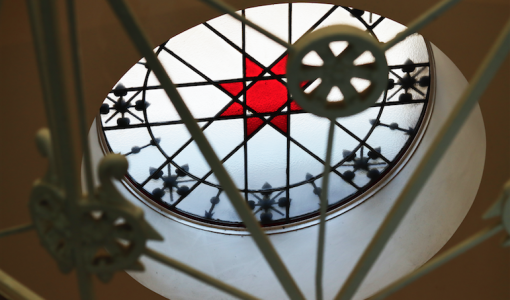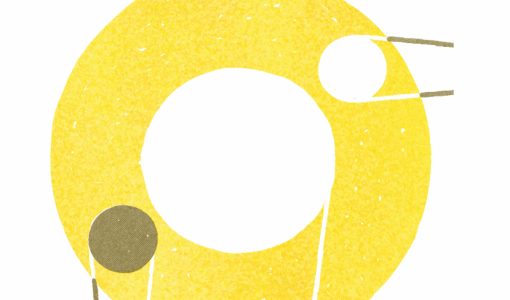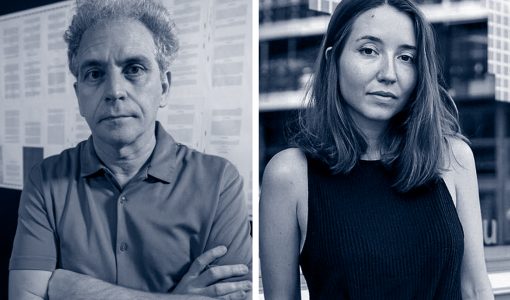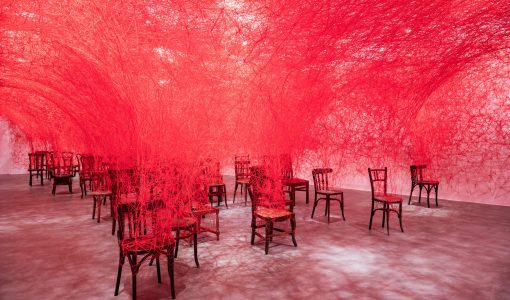
The Dream of the Audience: Theresa Hak Kyung Cha
Home
›
Exhibitions
›
The Dream of the Audience: Theresa Hak Kyung Cha
For the first time in Spain, the Fundació Antoni Tàpies presents a retrospective exhibition of the poetic and conceptual work of the Korean-American artist Theresa Hak Kyung Cha (Pusan, Korea, 1951 – New York, 1982). This artist’s work includes performances, films and videos, mail art, and artist’s books.
Cha’s work is a continuous exploration of themes stemming from her personal experiences as an exile and her cultural and linguistic displacement.
Theresa Hak Kyung Cha was born in Korea and emigrated to the United States with her family in 1963. She studied Comparative Literature and Art at the University of California, Berkeley, where she experienced the student protests against the Vietnam War and the emergence of experimental performances in the San Francisco Bay Area in the late 1960s and throughout the 1970s. During these years, Cha also had the opportunity to see performances, exhibitions, and video pieces by well-known national artists (Kipper Kids, Paul McCarthy, and Eleanor Antin, for example). In San Francisco, Cha also saw works of art by Paul Kos and Bruce Nauman. Her studio activities filmed on video had a major influence on everyone working in the field, as well as the body performances by Vito Acconci and Chris Burden and the dances by Simone Forti and Yvonne Rainer, among others.
Like her American and European contemporaries, Cha was influenced by structuralist linguistic theories and French film theory, which she studied at the Centre d’Études Américain du Cinéma in Paris with such theorists as Christian Metz, Raymond Bellour, and Thierry Kuntzel. Theresa Hak Kyung Cha is known among film theorists for the publication of the book Apparatus (1980), an anthology of film theory that Cha edited and designed for Tanam Press (New York). In the middle section of the book, Cha included her work Commentaire (1980).
Cha integrated structuralist linguistic theories and French film theory (which includes psychoanalysis) in her art in the visual forms of writing, images, and performances. The influence of cinematography on Cha’s work is visible not only in her films but also in works such as A Ble Wail (1975), in the reflection of the flickering flames of candles in mirrors, and also in the images, words, and black and white pages of her books, which suggest film sequences. Almost all of the images from Cha’s videos and slide projections appear and disappear by fading in and out. The repeated fading of the images creates a striking sense of suspension. Yet Cha’s most innovative approach has nothing to do with the transformation of images on the screen, but rather with the relationships established between multiple screens and between one or more screens and herself, the performer. Displacement is present in Cha’s work not only in the content of the images on the screen but also in the formation of the “screen” in itself.
Cha seems to have conceptualised the “cinematic” experience as a sort of alchemic ritual in which the participants in her performances transcend their individuality to find greater recognition through access to collective memory and the imagination.
Shortly after her death, the book Dictée (1982) was published, which combines family history, ethic consciousness, autobiography, different stories of female martyrs, poetry, and images. In the book, Cha explores the main themes of her work: memory, displacement, and alienation. All of Cha’s artistic production is characterised by a strong commitment to language. The artist explores the ability of language to create identity while at the same time looking for ways to deconstruct it. Cha’s art is proof of her ability to translate an experience of personal and cultural displacement into the basis for exploring the universal aspects of language, memory, communication, and consciousness.
The Dream of the Audience: Theresa Hak Kyung Cha includes photographical documentation and audio recordings of several of her performances, such as Aveugle Voix (1975), A Ble Wail (1975), Reveillé dans la brume (1977), and Other Things Seen, Other Things Heard (1978); film and video installations, such as Permutations (1976), Passages Paysages (1978), and Exilée (1980); slide projections, artist’s books, and works on paper.
This exhibition is accompanied by a publication with an introduction by Sabine Breitweiser, texts by Constance M. Lewallen, Lawrence Rinder, and Trinh T. Minh-ha, as well as a selection of texts and works by the artist.
Dates
28.01.2005 – 10.04.2005
Artist
Theresa Hak Kyung Cha.
Curator
Constance M. Lewallen.
Organised by
University of California, Berkeley Art Museum and Pacific Film Archive.
Touring
14/5/2004 – 15/8/2004, Generali Foundation, Viena.
28/1/2005 – 10/4/2005, Fundació Antoni Tàpies, Barcelona.














